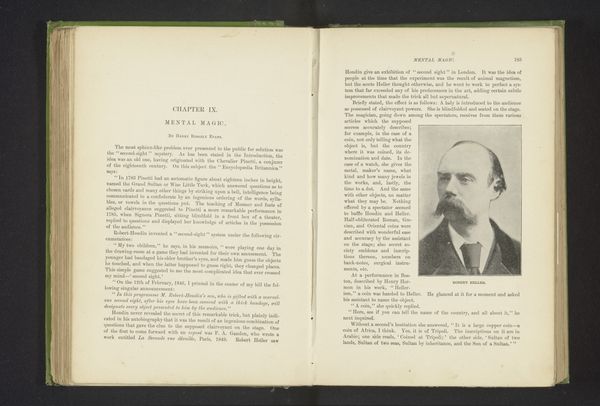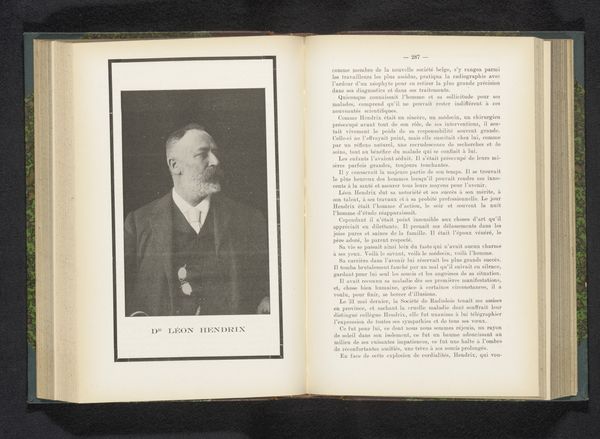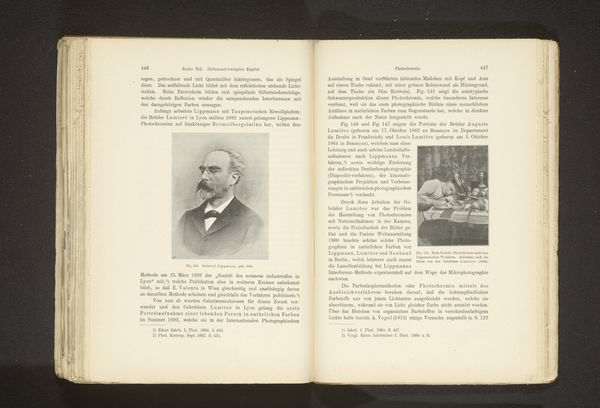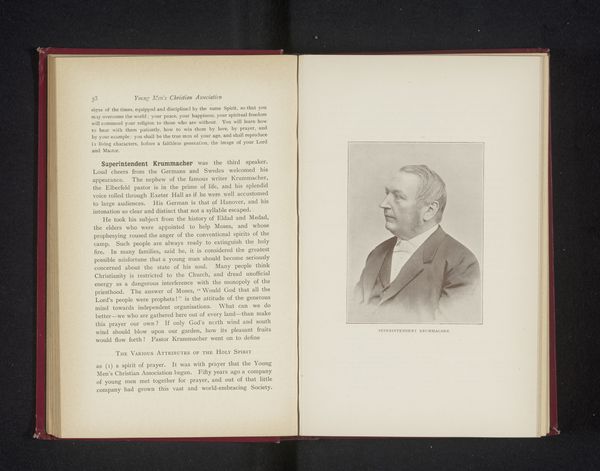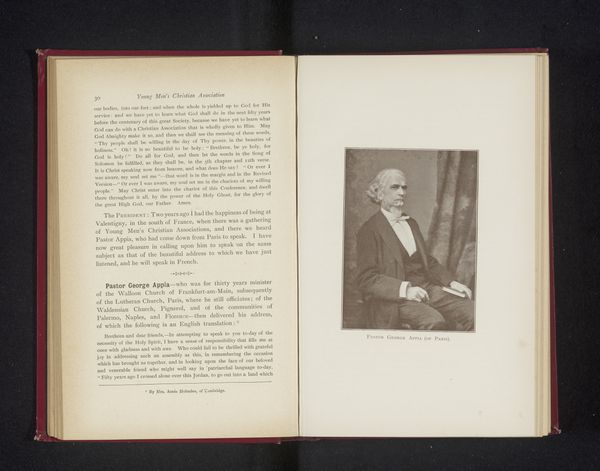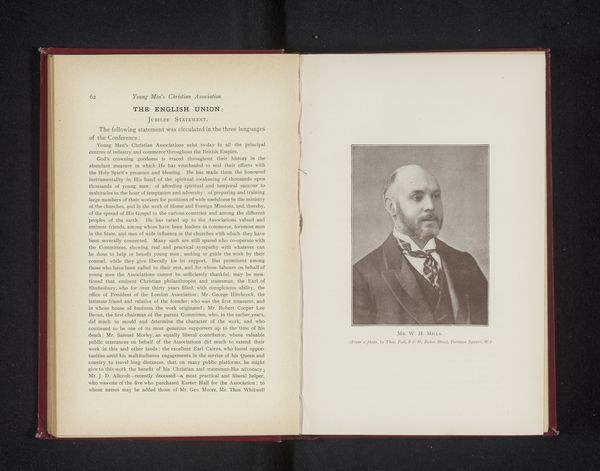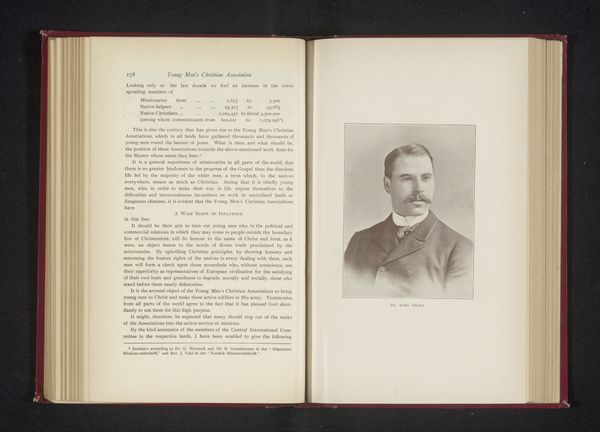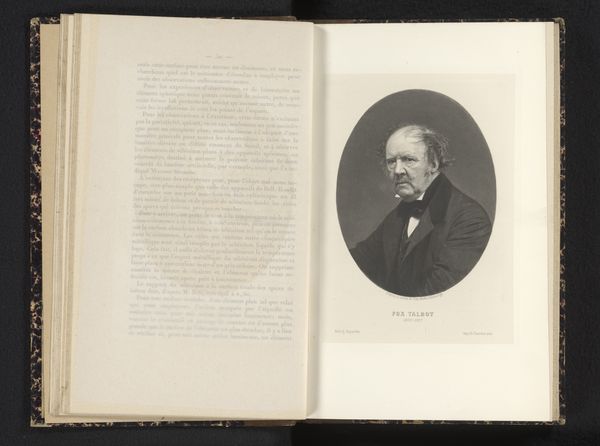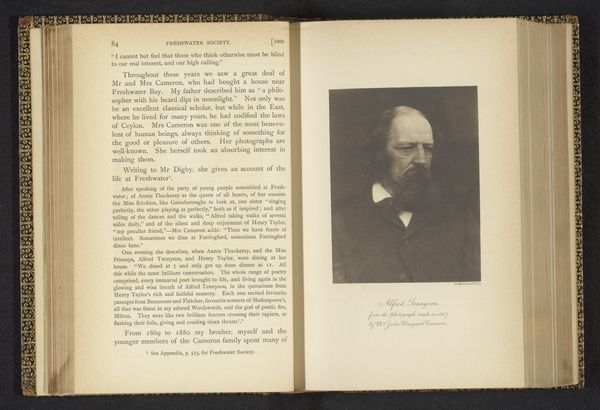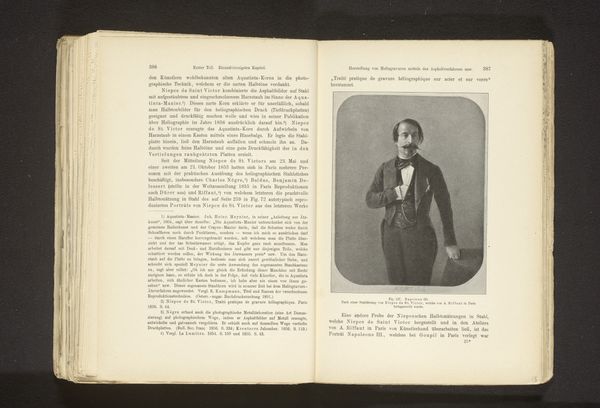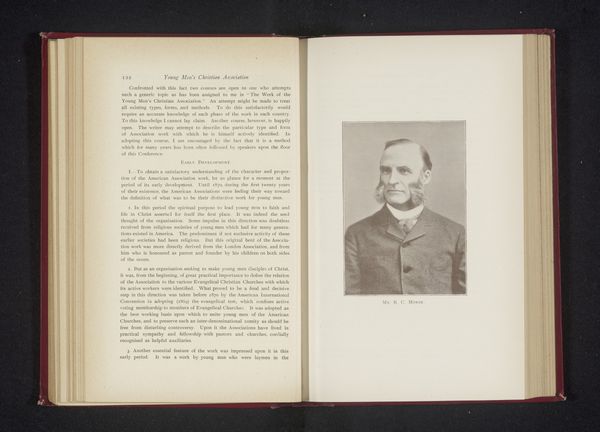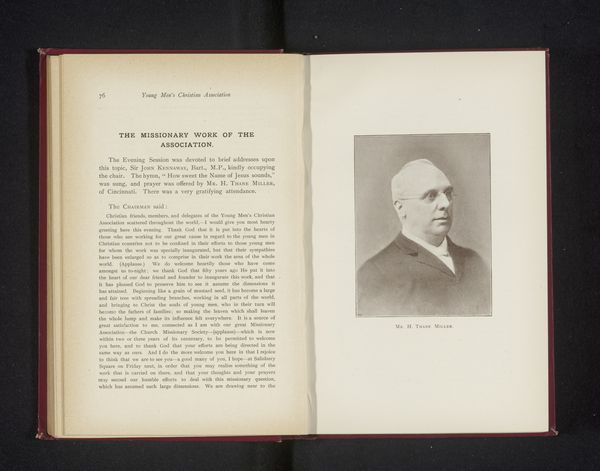
print, photography, albumen-print
#
portrait
# print
#
photography
#
academic-art
#
albumen-print
#
realism
Dimensions: height 113 mm, width 90 mm
Copyright: Rijks Museum: Open Domain
Editor: Here we have an albumen print, "Portret van Adolphe Martin," created before 1896 by Edgard Audra. The image is presented as a photograph in a book, perhaps even a scientific text based on the facing page. What do you see in this portrait, especially within this printed context? Curator: The placement within a printed book profoundly shapes our perception. The portrait takes on the quality of a scientific illustration. We're not just seeing a face; we are invited to interpret a figure of that time and all that it means to produce his likeness. Consider the cultural memory embedded in this type of portraiture: What does it signify to have one's image captured in this way, at that time? How did such representation shape social perception and historical narrative? Editor: So, it's more than just a portrait; it's a symbolic representation of status and possibly even scientific advancement. It seems to legitimize the person as an important figure in the corresponding field, much like images in textbooks. Curator: Precisely. It is not happenstance to produce a photograph for academic papers and publications of this nature. Look at the style—academic art merging with realistic representation. And this convergence, doesn’t that influence how we interpret and understand the subject himself? Consider, for example, if this person wasn’t included in an academic document, would you see their significance differently? Editor: Absolutely! I'm realizing how the context gives the image another layer of meaning that I would have missed initially. It makes me curious to explore how period photography and printing altered society’s collective memories and cultural awareness. Curator: Indeed. And by understanding these intersections, we gain greater insight into cultural self-perception and the construction of historical legacies.
Comments
No comments
Be the first to comment and join the conversation on the ultimate creative platform.
